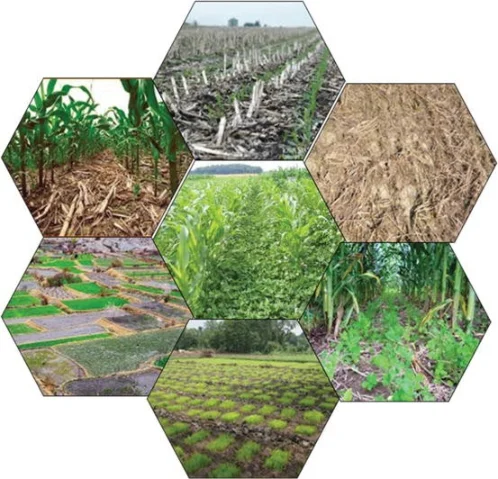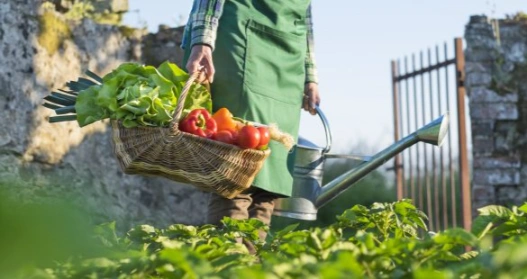If you have ever envisioned plucking ripe, flavorful black diamond apples straight from your backyard, you are in for an exciting journey. Moreover, black diamond apple trees, with their dark allure and exquisite taste, have become a popular choice among home gardeners.
In this guide, we will walk you through the process of growing your own black diamond apple tree in a language that is easy to understand.
The black diamond apple tree stands out for its mysterious appearance and delicious taste. Moreover, originating from a blend of various apple varieties, these trees have caught the attention of fruit enthusiasts.

Growing Popularity And Demand
As more people discover the appeal of black diamond apples, the demand for these unique fruits has surged. Growing your own black diamond apple tree not only offers a sustainable source of delicious fruit but also adds a touch of magic to your garden.
| Major Requirements | Description |
|---|---|
| Sunlight Requirements | For optimal growth, plant your black diamond apple tree in a location that receives at least 6-8 hours of direct sunlight daily. |
| Soil Conditions | Ensure well-draining soil, slightly acidic to neutral, with good fertility for a healthy black diamond apple tree. |
| Different Black Diamond Apple Tree Varieties | Not all black diamond apple trees are the same. Varieties differ in size, taste, and climate preferences. Research and choose one that suits your specific conditions and preferences. |
| Specific Climate | Consider your region’s climate when selecting a black diamond apple tree variety. Some thrive in colder climates, while others prefer warmer weather. |
| Planting Process Timing Considerations | Plant your black diamond apple tree during the dormant season, ideally in late winter or early spring, allowing it to establish roots before the growing season. |
| Proper Planting Techniques | Dig a hole twice the diameter of the root ball, place the tree, backfill, and water thoroughly. Mulch around the base for moisture retention and weed suppression. |
| Watering And Nutrient Needs | Consistent watering is crucial during the establishment phase. Once established, water deeply and regularly, avoiding waterlogged soil. |
| Essential Nutrients For Healthy Growth | Provide balanced fertilizer in spring and monitor nutrient levels throughout the season. Adjust based on soil test results and the tree’s needs. |
| Pruning For Success & Importance Of Pruning | Pruning shapes the tree, encourages air circulation, and removes dead or diseased branches. It also stimulates fruit production and maintains a manageable size. |
| Techniques For Shaping & Maintaining | Use clean, sharp pruning tools and follow proper techniques. Remove crowded or crossing branches, shaping the tree to an open canopy for sunlight penetration. |
| Pest and Disease Management | Stay vigilant for aphids, mites, and scale insects. Regularly inspect the tree and take prompt action to prevent widespread damage. |
| Natural And Chemical Control Methods | Explore natural remedies like neem oil or introduce beneficial insects. If necessary, opt for safe, approved chemical solutions. |
| Harvesting Tips & Knowing When To Harvest | Harvest black diamond apples in late summer to early fall. Look for deep color and firm texture, gently twisting to detach from the tree. |
| Proper Harvesting Techniques | Handle harvested apples with care to avoid bruising. Use pruning shears or gently twist to detach from the stem. Store in a cool, dark place for freshness. |

Black Diamond Apple Tree Care Tips
Adjust care based on seasons. Additionally, in winter, the tree may require frost protection, and in summer, it demands extra hydration. Tailor care to the tree’s unique needs throughout the year.
Cultivating a thriving Black Diamond Apple Tree requires dedicated care and attention to ensure optimal growth and fruit production. Begin by selecting a suitable planting site with well-draining soil and adequate sunlight exposure.
Plant the sapling in early spring, incorporating organic matter into the soil to enhance its fertility. Regular watering is crucial during the initial stages, promoting robust root development.
Once the tree is established, maintain a consistent watering schedule, ensuring the soil remains moist but not waterlogged.
Remove dead or diseased branches annually, and shape the tree to encourage sunlight penetration and air circulation. With a commitment to these care tips, enthusiasts can enjoy the bountiful harvest of unique and flavorful Black Diamond apples.
Special Considerations For Young Trees
Provide support for developing branches and protect from harsh weather conditions. Extra care during their early years ensures a robust and healthy tree. Growing Black Diamond apples requires special considerations, especially when cultivating young trees.
These unique apples, known for their striking dark hue and sweet flavor, demand careful attention during the initial stages of growth to ensure optimal development. Young Black Diamond apple trees thrive in well-drained soil with a slightly acidic to neutral pH.
Furthermore, young Black Diamond apple trees benefit from consistent watering, particularly during dry spells, to establish a strong root system. Mulching around the base of the tree helps retain moisture and suppress weeds.
It is advisable to remove any damaged or diseased branches and to maintain an open canopy for improved air circulation. Additionally, providing a balanced fertilizer in the early stages of growth contributes to the overall vitality of the young Black Diamond apple trees, setting the stage for a bountiful harvest in the future.
Addressing Common Challenges
Identify and address common issues such as pests, diseases, and environmental stress. Quick fixes for common problems ensure a healthy tree.
In the enchanting realm of orchards, Black Diamond Apples have emerged as both a culinary delight and a challenge for cultivators. However, the journey from seed to harvest is fraught with challenges that diligent orchard keepers must navigate.
One prevalent obstacle lies in the delicate balance of soil composition and climate required to nurture these dark-skinned marvels. Moreover, Black Diamond Apples pose a unique challenge in terms of cultivation sustainability.
As the demand for these exotic fruits escalates, growers face the imperative to strike a harmonious equilibrium between meeting market needs and preserving the delicate ecosystem.
By addressing these challenges head-on, cultivators can ensure the continued availability of this extraordinary fruit, allowing it to remain a rare and sought-after delicacy for connoisseurs worldwide.
Sustainability & Eco-Friendly Practices
Explore eco-conscious approaches to apple tree cultivation, reducing environmental impact and promoting sustainability. Black Diamond Apples takes pride in its commitment to sustainability and eco-friendly practices, setting a high standard in the agricultural industry.
Embracing environmentally conscious methods, the company employs organic farming techniques that prioritize soil health and biodiversity. By avoiding synthetic pesticides and fertilizers, Black Diamond Apples not only ensures the purity of its produce but also contributes to the preservation of ecosystems.
Through these conscientious practices, Black Diamond Apples not only delivers a unique and premium product to consumers but also exemplifies a dedication to a greener, more sustainable future for the agricultural landscape.
Black Diamond Apples Unique Features and Flavors
Discover the distinct features and flavors of black diamond apples that make them perfect for culinary delights. Black Diamond Apples are a rare and extraordinary fruit that captivates the senses with its unique features and flavors.
Distinctive for their dark, almost mystical hue, these apples boast a deep, purplish-black skin that conceals a crisp, sweet interior. The intriguing coloration is attributed to the presence of anthocyanins, a group of antioxidants also found in blueberries and red cabbage.
Beyond their striking appearance, Black Diamond Apples offer a flavor profile that combines the sweetness of traditional apples with subtle hints of berry undertones.
Recipes And Culinary Inspiration
Explore recipes and culinary ideas to make the most of your black diamond apple harvest. Indulge your taste buds in the exquisite world of culinary delight with the mesmerizing Black Diamond Apple.
Renowned for its distinctive deep purple hue and exceptional sweetness, this rare gem of the orchard offers a unique canvas for culinary creativity. Elevate your gastronomic experience by exploring a plethora of recipes that showcase the Black Diamond Apple’s unparalleled flavor profile.
Unlock the culinary secrets hidden within this extraordinary fruit and embark on a journey of sensory exploration. Discover the art of balancing flavors and textures as you delve into the world of recipes curated to enhance the natural richness of this exceptional apple, transforming every bite into a moment of gastronomic bliss.
Networking With Fellow Growers
Additionally, build a network with other growers to share experiences, tips, and advice for successful cultivation. Whether through local farmer’s markets, online forums, or collaborative events, the act of networking not only strengthens individual capabilities but also contributes to the resilience and sustainability of the entire agricultural ecosystem.

Frequently Asked Questions (FAQ)
Like many apple trees, the Black Diamond apple tree likes lots of sunlight. The apples turn from bright purple to dark purple because of the sun’s rays. These trees grow in a place with a lot of rain.
Black Diamond apples come from Nyingchi, a little, faraway town in the mountains of Tibet. However, if you can’t go to Asia and climb up some mountain orchards, you probably won’t get to try this kind of apple.
Eating black apple can stop vision problems as you get older, like macular degeneration, loss of vision, and cataracts. Black apple also helps your body work better by having riboflavin, iron, and Vitamin B12. These things help make red blood cells, absorb iron, and keep your body tissues healthy.
Dark apples grow in Nyingchi, a small mountain city in Tibet. The place gets lots of sunlight during the day and becomes very cold at night. This makes the apples’ skin change to a deep dark color.
The best spot for one tree or a group of apple trees is where there’s lots of sunlight, the soil drains well, and there are no other trees nearby. Additionally, make sure it’s not in a low area where cold air can get trapped. Before planting, check the soil by testing it.
Because of how this special apple grows, not many farmers choose to grow it. It’s hard to find the same climate and temperature as in the highlands of Tibet in most parts of the world.
“Apple trees can live for more than 40 years. Like all living things, they keep changing. They go through different stages of growth, starting with when they’re planted and young, then growing leaves and branches, becoming mature, and finally getting old.”
Conclusion
In conclusion, growing a black diamond apple tree is a rewarding endeavor that adds charm and flavor to your garden. By following these steps and tips, you can nurture a healthy tree and enjoy the magic of harvesting your own black diamond apples.
Related Post

Meet Our Expert Agricultural Administrator
Welcome to agrigreenhands.com, your dedicated hub for all things related to agricultural farming. Leading the way in our commitment to sustainable and innovative practices is Jawad Hussain, our esteemed administrator with a profound background in agriculture….


